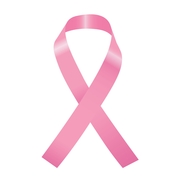 Nelson Marques/PhotoSpin
Nelson Marques/PhotoSpin
The American Cancer Society estimated that in the United States, one in eight women, or 12 percent, will be diagnosed with an invasive breast cancer.
That estimated lifetime risk increases to about 60 percent in women who have mutations to the BRCA1 or BRCA2 genes, according to the National Cancer Institute.
Knowing that you have a strong family history of breast cancer can affect how you manage your cancer risk. That was the case for three sisters — Melissa, Kristy and Erica — whose mother survived breast cancer, had a grandmother and aunt who passed away from breast cancer, and three aunts who are BRCA positive.
When Kristy discovered a benign breast lump, she learned that she was BRCA positive; her sisters would learn they too were BRCA positive a year later.
EmpowHER talked to Melissa, Kristy, Erica and their mother Leonora about their journey. EmpowHER also talked to Dr. C. Andrew Salzberg, who pioneered “One Step” breast reconstruction 11 years ago, about the procedure and its benefits for patients.
EmpowHER:
You have a family history of breast cancer. How did that affect how you managed your cancer risk?
Melissa, Kristy and Erica:
We knew about our cancer risk since our mom was diagnosed with breast cancer in '97 right after her sister had passed away from it the year before. She thought this was too much of a coincidence and decided to get checked.
We were 13, 12 and 9 at this time, so we had a long time to prepare ourselves for the news that one day we might have this gene. Seeing numerous relatives receive this news before us as well as some having breast cancer, showed us that we can take preventative measures such as mammograms, MRIs and of course the prophylactic surgery.
We knew early on we did not want to go through the fear that our mother did of having cancer or the outcome that it could bring, such as in the case of our aunt and mothers cousin who had died from it at such a young age. We all made the decision long before we knew we had the genetic mutation that we would go through with the prophylactic mastectomy, because to us, this was our best chance at survival.
EmpowHER:
How did you cope with the news that you were BRCA positive?
Melissa, Kristy and Erica:
We were all prepared for this news and knew that our chances were 50/50. We handled it well, and were not really taken by surprise because we prepared ourselves for the worst. Having such a long time to prepare and also seeing our mother and other relatives deal with it helped a lot.
EmpowHER:
What was it like for you when your daughters discovered they were BRCA positive?
Leonora:
It was something I was definitely prepared for but still scary at the same time. Knowing that there was a 50/50 chance for each of them, and having four girls and one boy, I knew the probability that at least one of them would have it was great. But hearing that three of them in a row had it was a little shocking. They handled it really well however, and I knew all I could do was offer my love and support in whatever decision they made.
EmpowHER:
Why did you decide to get “One Step” breast reconstruction after your mastectomy?
Melissa, Kristy and Erica:
We decided on this procedure because our mother had heard through someone she had come into contact with at work [who] had traveled all the way from Hawaii to see Dr. Salzberg and Dr. Ashikari for this procedure. They had said that the outcome was better than expected and were really happy with the results.
This caused us to look further into this procedure, and we are really glad we did because Dr. Ashikari and Dr. Salzberg were so great to us and really made us feel secure and confident in choosing them and the procedure. This kind of surgery has come such a long way over the years, and especially since our mother had undergone the tissue expander procedure, which was only available at that time.
We all feel and look great and are just amazed at how incredible the results are. Being young, we of course wanted the results to be as natural as possible, and we truly feel that Dr. Salzberg has achieved this for each of us.
EmpowHER:
What makes “One Step” breast reconstruction different from other procedures?
Dr. Salzberg:
Breast reconstruction is most frequently performed in multiple procedures using implants. Typically after mastectomy, a deflated balloon-like device called a “tissue expander” is put in the breast and filled with salt water over three to six months until the preferred size is achieved. A second surgery is required to put in the permanent implant.
To avoid this lengthy and uncomfortable expander process, and enable a woman to wake from mastectomy with breasts in place, I developed a new method of reconstructive surgery called “Direct to Implant” or referred to as “One Step.”
With this procedure, we put a permanent implant in the breast immediately following the mastectomy. Simply put, we use a specially prepared tissue material that makes a space for the implant without having to use tissue expanders. There is no months-long filling process or need for a second surgery.
Compared with traditional implant breast reconstruction, the newer Direct to Implant, or “One Step,” procedure I developed provides women with a shorter and less uncomfortable time to achieving final results, plus the benefit of having breasts in place immediately after mastectomy.
One Step breast reconstruction is often done along with nipple-sparing mastectomy, leaving a woman with a breast that retains a more natural appearance.
One Step breast reconstruction is usually an option for a woman whose breast skin is healthy and able to accommodate the implant, and without excessive ptosis (sagging.) Very obese patients are generally not good candidates for implant reconstruction overall and are usually better served by other reconstruction options that may involve fat and/or muscle transfer.
EmpowHER:
What are the emotional and physical benefits for the patient?
Dr. Salzberg:
There are many physical and emotional advantages for a woman having a Direct to Implant, or One Step, breast reconstruction as part of her mastectomy procedure.
One Step breast reconstruction:
• Involves one surgery to create the breast mound, and avoids the need for a second reconstructive surgery for the majority of women.
• Avoids the use of tissue expanders, which can be uncomfortable or painful for some women and typically take three to six months to be fully expanded.
• Enables a woman to wake up from her mastectomy with breast implants already in place, helping reduce emotional stress and preserve a positive body image.
• May reduce the overall cost in health care dollars by avoiding a second anesthesia and hospital procedure.
• Reduces complications associated with implants — such as skin necrosis (breakdown) and capsular contracture (tightening and distortion of the skin around the implant) — compared to the traditional tissue expander process.
EmpowHER:
How has your health been since the procedure?
Melissa, Kristy and Erica:
Our health has been great and Dr. Ashikari has us all on annual breast exams just for extra precaution.
EmpowHER:
What advice would you give to other women at high risk for breast cancer?
Melissa, Kristy and Erica:
Our advice is to educate yourself and be aware of all precautions and options available to you. What might be right for someone else might not be right for you. You need to be comfortable with the decisions you make because this is your life, just make sure you are doing something, whether it be mammograms, MRIs, self-breast checks or prophylactic surgery.
And if you do decide to go through with the surgery, you are not alone: many women cope differently, whether it's through their family/friends or even hearing about other women's stories who are going through the same thing.
We ourselves have just heard about organizations such as EmpowHER and FORCE (Facing Our Risk of Cancer Empowered), and think that they are such great outlets for women to help other women. Information and support are the keys to getting through and overcoming this hand we have been dealt.
Leonora:
My advice would be to start precautions as soon as possible. Don’t wait just because you may be young. Get checked when you are supposed to and really listen to all the options available to you. Prophylactic surgery is a really huge decision but one that I think is definitely worth looking into.
A lot of stress and fear can come from this high risk, so taking charge and doing whatever you can to reduce your risk is the best option available to you.
Dr. Salzberg:
I’d like to offer some tips for women facing cancer preventive or treatment-related breast reconstruction:
• Do your homework: Gather information on types of mastectomy and breast reconstruction procedures and surgeons that perform them. Talk to other women about their experiences. Read discussion boards on support group websites. Find information on medical websites or journals.
• If a surgeon says you’re not eligible for a certain type of surgery, there may be a valid reason OR it may be that he/she doesn’t perform that surgery. Find a surgeon with expertise in the procedure, and be sure to ask how many they’ve done.
• Ask the surgeon to show you patient before-and-after photos, and not just successful cases. A skilled, confident surgeon will also show you cases that did not have ideal results, and explain why not.
• Get a second opinion to find a procedure and surgeon that feels right for you; insurance will usually cover a second opinion.
• Insist on great results and do not compromise, as breast reconstruction can help make you feel “whole” again. If your breast or general surgeon tells you to wait until later for reconstruction, make a plastic surgery consult with a board certified (ASPS) surgeon to explore the option of immediate reconstruction.
References
American Cancer Society. What are the Key Statistics About Breast Cancer?. Web. 27 March 2013.
http://www.cancer.org/cancer/breastcancer/detailedguide/breast-cancer-key-statistics
National Cancer Institute. BRCA1 and BRCA2: Cancer Risk and Genetic Testing. Web. 27 March 2013.
http://www.cancer.gov/cancertopics/factsheet/Risk/BRCA
Interview with Melissa, Kristy and Erica. Email. 26 March 2013.
Interview with Leonora. Email. 26 March 2013.
Interview with Dr. C. Andrew Salzberg. Email. 26 March 2013.
Reviewed March 27, 2013
by Michele Blacksberg RN
Edited by Jody Smith






Add a CommentComments
There are no comments yet. Be the first one and get the conversation started!